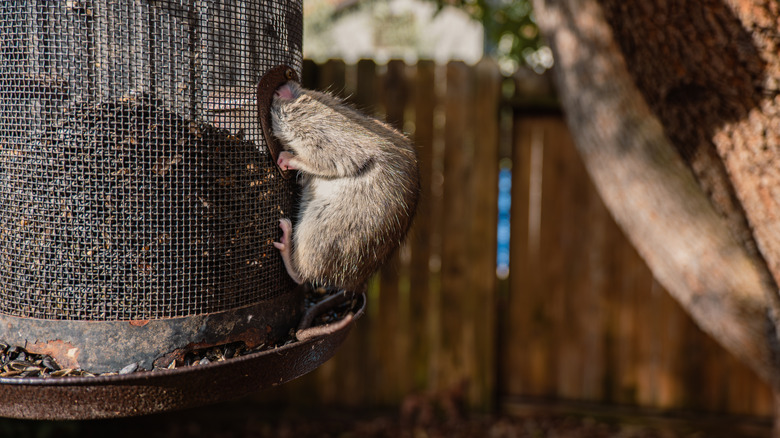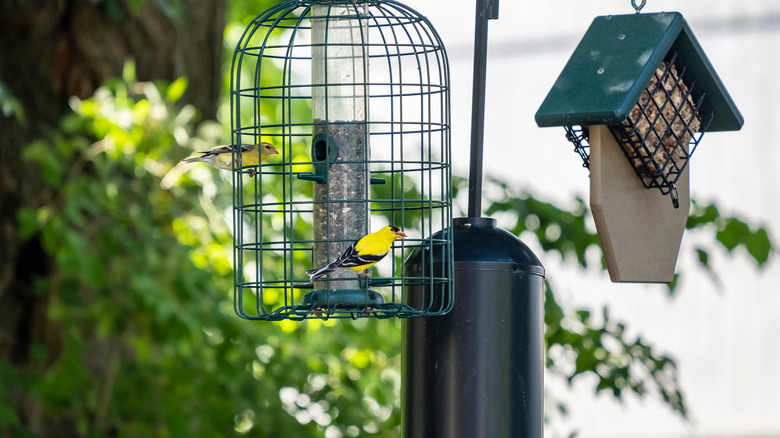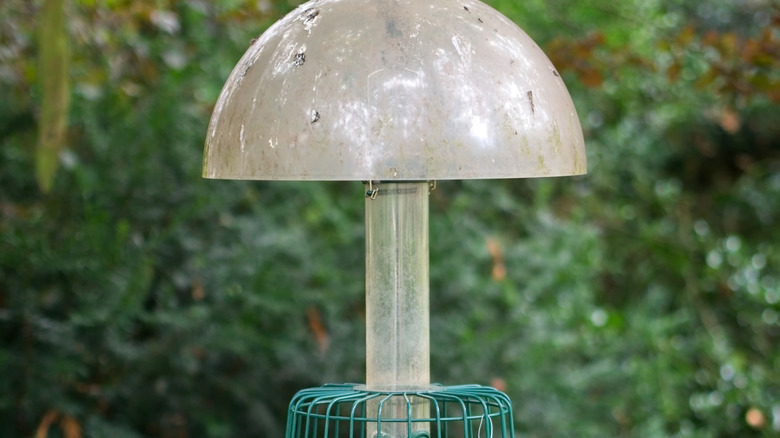A Squirrel Baffle Is The Key To Keeping Rats Away From Your Bird Feeder
One of the most discouraging sights for anyone who puts up a bird feeder is discovering that the visitors enjoying it aren't birds but rats. You head out to refill the feeder, expecting to see cardinals or finches swoop in, and instead you spot a rodent clinging to the feeder pole, trying to reach the top. It's annoying, it's unsanitary, and it happens because rats are drawn to the smell of seed hulls. Once they catch a whiff, they'll do everything they can to get to the source. The most effective way to put an end to this problem is to install a squirrel baffle.
A baffle is a physical barrier that attaches above or below your bird feeder and stops rodents in their tracks. Unlike sprays or traps, a baffle directly blocks access to the feeder, meaning rats can't climb up, jump across, or wriggle their way to the seeds. Your birds get their food, and the rodents move on, allowing you to fully enjoy the benefits of having a bird feeder in your yard. Here's why a squirrel baffle is effective and how you can pick the right one.
Why a baffle is the best way to keep rats off your bird feeder
Rats and other climbing rodents, including squirrels, won't get anywhere near your bird feeder once you add a proper barrier, and that's exactly what a baffle is designed to do. Made of plastic or metal, it attaches to the feeder pole and creates a shield that rodents simply can't get past. You can place a baffle above the feeder, below it, or even on both sides for extra protection. Either way, it makes life a lot harder for rats because baffles are designed to be smooth and slippery. No matter how persistent the animal is, they can't get a grip long enough to reach the food.
Some people try to improvise by greasing the feeder pole, thinking it'll create the same effect. But it's not a good idea as grease quickly becomes sticky, which actually makes climbing easier over time. Worse, it's harmful. It can damage a rat's fur, making it harder for them to stay warm in winter. If birds brush against a greased pole, the sticky substance can ruin their feathers and interfere with flight. A good baffle on its own is all you need to keep the feeder safe, the birds happy, and the rodents away, helping you attract birds to your garden even more effectively.
Picking the perfect squirrel baffle for your bird feeder
Choosing the right baffle is important to keeping your bird feeder safe from rat attacks. The type of baffle you need depends largely on how your feeder is set up. If your garden has pole-mounted feeders, you can add a baffle above the feeder to stop rats from jumping up and reaching the seed. These baffles come in various shapes: cylinders, domes, or flat designs. There are two main variations: spring-loaded, which slides up and down and knocks off the animal, and stationary, which stays fixed in place. If you go with the stationary option, aim for a width or length of 14 to 18 inches. Those dimensions make it extremely difficult for rodents to climb over it.
Baffles added below the feeder should be at least 4 feet above the ground. Make sure your pole is 7 to 8 feet away from trees, fences, or decks to prevent rats from using those as a bridge. For hanging feeders, a sloped cone baffle on top works best. The wide, angled design makes it impossible for animals to stay on top, and they slide off without being able to grip the feeder. If the feeder hangs freely with no structure beneath it, you don't need to add a baffle at the bottom. However, you might want to start bringing your bird feeder indoors at night to keep it fully safe from persistent nocturnal rodents.


